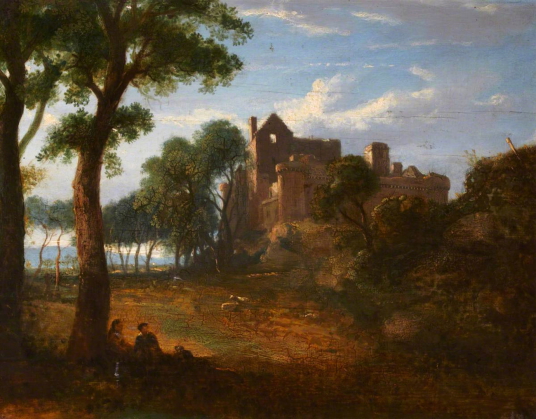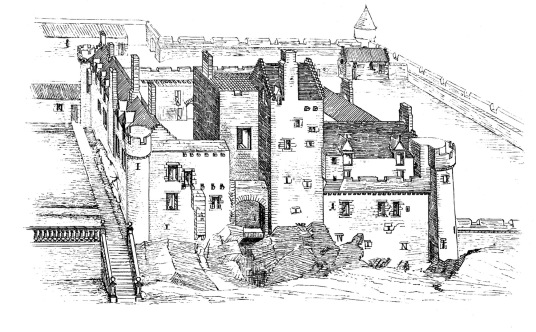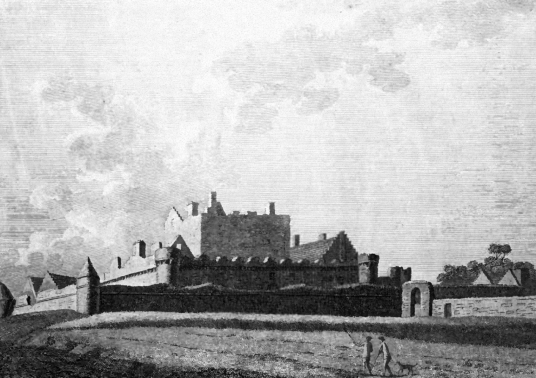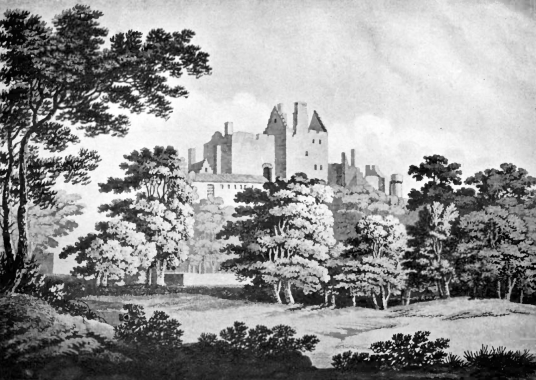Craigmillar Castle
Set in a prominent position with fine views over Edinburgh, Craigmillar Castle is a ruinous but well-preserved medieval stronghold with a warren of chambers to explore, held by the Preston then Gilmour families and associated with Mary, Queen of Scots and the intrigues of the time.
Lothians: About 3 miles south-east of Edinburgh Castle, on minor road south between A6095 and north of B701, just south of Craigmillar housing scheme, at Craigmillar Castle.
HES NT 288709 OS: 66 EH16 4SY
OPEN: Open all year: Apr-Sep, daily 9.30-17.30; Oct-Mar, Sat-Wed10.00-16.00; last ticked sold 30 mins before closing; closed 25/26 Dec and 1/2 Jan. Sales area. Weddings and events.
Tel: 0131 661 4445 Web: www.historicenvironment.scot
Checked 05/04/18
With magnificent views over the surrounding area, Craigmillar is a strong, imposing, extensive and very well-preserved ruin with a warren of chambers, corridors and stairs. It consists of a 14th-century L-plan tower, surrounded by a 15th-century heavily machicolated curtain wall with round corner towers and an intact wall-walk.
The walls are pierced by inverted keyhole gunloops. Early in the 16th century the castle was given an additional walled courtyard, protected by a
ditch.
The main tower is roofed with stone slabs, inside a parapet, and the stair is topped by a caphouse.
Domestic ranges were constructed around the courtyards, which also enclosed gardens.
The entrance to the main tower, which has walls up to 10 foot thick, is through a wide-arched entrance, and leads to a vaulted lobby and to a turnpike stair. The basement is vaulted and had an entresol floor. The large hall, on the first floor (second floor of the external ranges), has a fine hooded moulded fireplace and also had a mezzanine. The vaulted chamber in the wing was once the kitchen, and is reputed to be where Mary, Queen of Scots, stayed when she visited the castle. Another turnpike stair leads to the battlements.
The courtyard enclosed three-storey ranges, with vaulted basements, which contained a kitchen and a long gallery, as well as many other chambers.
‘Crayggmillar’ is marked on Blaeu’s map of The Lothians and is shown in an enclosed park.
The Prestons held the property from 1374, when Sir Simon Preston, Sheriff of Edinburgh acquired the lands and built a new castle on the site of a much older stronghold: the property was once known as Gorton or Gourtoun. The Preston Aisle of St Giles Cathedral [NT 257736] in Edinburgh was built in memory of Sir William Preston of Gorton, who died in 1453, after he had given the church a reliquary containing the arm bone of St Giles that he had acquired in France. Preston was buried in St Giles. The fish pond, which can be seen in the field below the castle, is shaped into a ‘P’ for the Preston family, and there are several heraldic panels with the Preston coat of arms.
William Preston of Craigmillar is on record in the 1470s. In 1477 James III imprisoned his brother John, Earl of Mar, in one of its cellars, where he died. James V visited the castle to escape ‘the pest’ in Edinburgh. The Earl of Hertford burnt the castle in 1544, after valuables placed here by the citizens of Edinburgh had been stolen, although the damage done cannot have been extensive and the castle may have been taken without much of a fight from Sir Simon Preston of Craigmillar, the Provost of Edinburgh. Sir Simon was, however, captured and was apparently made to walk most of the way to London before being released.
Mary, Queen of Scots, used Craigmillar often including in 1563, and fled here in 1566 after the murder of David Rizzio by, among others, her second husband Henry Stewart, Lord Darnley. It was also here that James Stewart, Earl of Moray, James Hepburn, Earl of Bothwell, William Maitland of Lethington and others plotted Darnley’s murder. Sir Simon Preston, mentioned above, was originally loyal to Mary, but later became her jailer, after which she was imprisoned in Lochleven Castle. Mary’s son, James VI, stayed here in 1589.
In 1660 Sir John Gilmour, who was later President of the College of Justice, bought Craigmillar, confirmed in a ratification of 1661, and had the old stronghold altered into a comfortable residence, reconstructing the range on the west side of the courtyard. Sir Alexander Gilmour of Craigmillar is on record in the 1690s and 1700s. The former chapel was used as a burial aisle by the family, and in 1789 the west range and chapel appear still to have been roofed. The Gilmours abandoned the castle for The Inch, and the building was left as a romantic ruin.
A block to the west of the courtyard entrance, now housing the toilets, was used as a Presbyterian church in the 17th century. The castle was consolidated for the a visit by Queen Victoria in 1886. The castle was still held by the Gilmours when given into the care of the State in 1946 and is managed by HES.
A walled-up skeleton, standing upright, was found in one of the vaults in 1813.
One story is that the unexplained smell of lavender has been repeatedly noticed in the great hall and that this is evidence of some supernatural activity. There are also stories of a ‘Green
Lady’ haunting the vicinity, said by some to be the bogle of Mary, Queen of Scots.
The castle was used as a location in the 1997 BBC TV series Ivanhoe, and in the third series of Outlander, being used as Ardsmuir Prison. The castle was also used as a location in the Netflix movie Outlaw King, about Robert the Bruce.
One story has the castle being connected to Peffermill House by an underground passage.

































